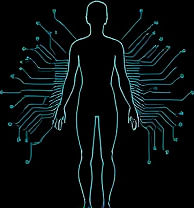The Potential Side Effects of Nootropics in Health Optimization
 by Thaddeus Blanda
by Thaddeus Blanda
Nootropics offer ways to boost cognitive function, but they come with risks like headaches and sleep issues. This article examines these effects and provides tips for safe use, helping enthusiasts make informed choices for personal enhancement.

Nootropics have gained attention as tools for cognitive improvement. These substances aim to support brain function and overall wellness. Many people turn to them for better focus and mental clarity.
What Are Nootropics?
Nootropics include a range of compounds, from natural herbs to synthetic options. They work by influencing brain chemicals. For instance, caffeine and L-theanine are popular choices that some use to enhance alertness. These can come from supplements or everyday items.
In health optimization, nootropics play a key role. They help individuals seeking to improve their daily performance. Examples include piracetam or omega-3 fatty acids, which might aid memory.
Benefits of Nootropics
People often seek nootropics for their ability to sharpen the mind. Improved concentration is one advantage, allowing for more productive work sessions. Some report better learning abilities after consistent use.
Wearable technology can track these changes. Devices like fitness trackers monitor sleep patterns, which might improve with certain nootropics. This integration supports personal enhancement efforts.
Potential Side Effects
While benefits exist, side effects are a concern. Headaches can occur, especially with new substances. This happens when the body adjusts to changes in brain activity.
Insomnia is another issue. Some nootropics might disrupt normal sleep cycles, leading to fatigue over time. Gastrointestinal problems, such as nausea, have also been noted in users.
Long-term use may lead to dependency. The brain could rely on these aids, making natural function harder without them. Monitoring through wearables helps spot these patterns early.
Different people experience varying side effects. Factors like dosage and individual health play a part. For example, those with sensitivities might face more challenges.
Safe Practices for Using Nootropics
To minimize risks, start with low doses. This approach lets the body adapt gradually. Keeping a journal of effects can reveal patterns over time.
Combining nootropics with wearable technology offers extra support. These devices track heart rate and sleep, providing data on how substances affect the body. Regular checks ensure adjustments as needed.
Staying hydrated and maintaining a balanced diet supports overall health. Physical activity can counteract potential negative impacts, promoting a holistic strategy.
Consulting professionals is wise before starting. They can offer personalized advice based on health history. This step is crucial for those new to enhancement methods.
The Role of Wearable Technology
Wearables add value in biohacking. They provide real-time data on vital signs, helping users notice side effects quickly. For instance, a spike in heart rate might signal an adverse reaction.
This technology aligns with goals of personal enhancement. By analyzing trends, individuals can fine-tune their routines. It turns data into actionable insights for better decisions.
Conclusion
Exploring nootropics involves weighing pros and cons. With careful use, they can aid in health optimization without major setbacks. Focus on listening to your body and using tools like wearables for guidance.
Ultimately, the path to self-improvement requires awareness. By understanding potential issues, enthusiasts can pursue cognitive gains safely and effectively.
